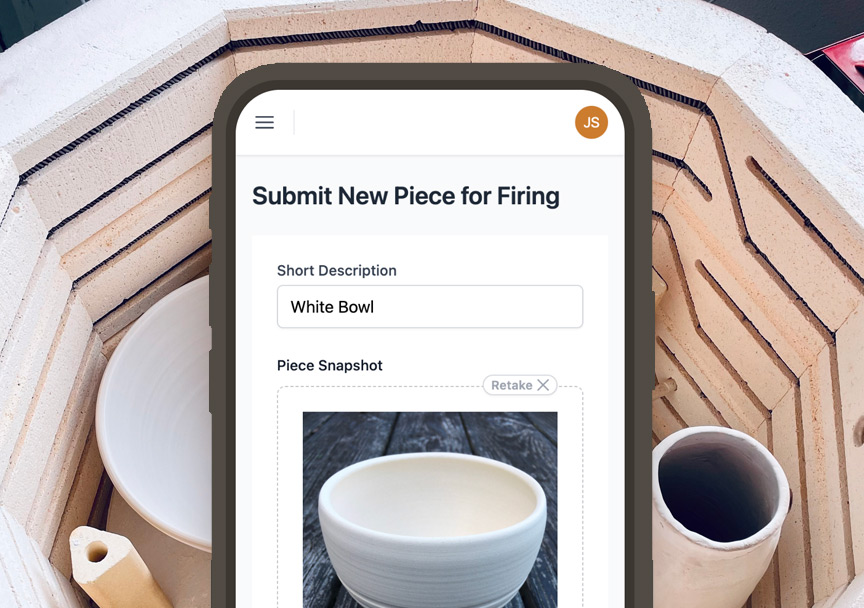The drying process must be carefully controlled as an essential step between molding clay and firing finished ceramic pieces. Air and kiln drying can introduce stresses like shrinkage that manifest as cracks, fractures, and deformation.
However, with attentive air drying habits and control of kiln moisture, you can successfully transition clay work through the delicate drying stage without mishaps. Here are tips for flawless clay drying from start to finish:
Prepare Clay Properly
The key to crack-free drying starts before clay even leaves the worktable. Only use smooth, consistent, well-conditioned clay that has:
- Been thoroughly wedged to remove air pockets
- No grog chunks or hard unincorporated bits
- Appropriate softness - pliable but not sticky
- Uniform thickness in the final piece
Properly prepared clay with even moisture distribution and density will dry smoothly.
Slow Air Drying
Never rush or force the air drying process. Both sudden drying and overly slow drying cause issues. Maintain a controlled, gradual pace.
Set pieces to dry in a climate-controlled room at around 70°F. Avoid direct sun, heaters, or drafts that desiccate the surface too quickly. Drape plastic wrap or damp cloths loosely over work if drying too fast.
Turn pieces regularly as they dry to prevent uneven stresses. Consider investing in a humidifier to add moisture back if needed in very dry conditions.
Check Moisture Levels
Learn to recognize the range of material states clay passes through as it dries:
- Wet clay - very moist and malleable
- Leather hard - cool, smooth, can be tooled
- Bone dry - appears chalky, fragile
Leather hard is ideal for smoothing surfaces and finishing details before bisque firing. If clay gets overly dry, re-wet by spraying or sealing in plastic.
Recognize Drying Stresses
As clay loses moisture, shrinkage stresses develop within the material. Notice these warning signs:
- Corners lifting or curling down
- Sudden cracks appearing
- Twisting or warping slabs
- Spongy areas that are drying too fast
Take corrective action if observing these issues by adjusting humidity or supports.
Add Supports Wisely
While forms require support during drying, improper supports themselves can introduce cracking:
- Avoid rough textures against clay like terrycloth
- Use kiln stilts and spacers to raise pieces off surfaces
- For slump molds, keep even contact and weight distribution
- Don’t wedge or force clay into stiff commercial molds
Support fully from below to prevent distorting forces.
Control Kiln Drying Rate
The final stage of drying happens in the bisque kiln. Rapid heating or cooling risks shocking clay.
Program kiln with gradual ramp rates between 60-120°F per hour. Pause at 180°F to allow heat to equalize before slowly proceeding.
Try bisque firing protective saggars or beds of alumina sand that insulate pieces from temperature spikes.
Appropriate Clay Thickness
Shrinkage tears clay apart when thickness varies within a piece. Maintain as uniform a wall profile or slab thickness as possible without abrupt transitions that concentrate stresses.
Avoid pinched areas, heavy joining points with other sections, and pointed protrusions or handles. Design flowing, gradual contours.
Reinforce Vulnerable Areas
For unavoidable clay thickness changes like spouts and handles, add reinforcements:
- Extra clay to taper thickness gradually
- Coil or slip trailers to bridge thin and thick areas
- Scored scratch marks to dissipate strain between zones
- Tiny grog inclusions for localized strength
This eases the transition in rigidity, so stresses stay distributed.
Bisque Fire Before Glazing
Always bisque fire clay pieces to completion before applying glazes or decorations. Firing a wet glazed piece is virtually guaranteed to fail due to the added moisture.
Drying clay fully to bisque stage removes nearly all moisture and shrinkage tendencies before risking decorative surface applications.
You can minimize frustrating cracks and warp with mindful preparation, drying, and firing practices. Be attentive, control the environment, and respond promptly to any issues. A bit of patience ensures your clay work survives intact to final firing.


